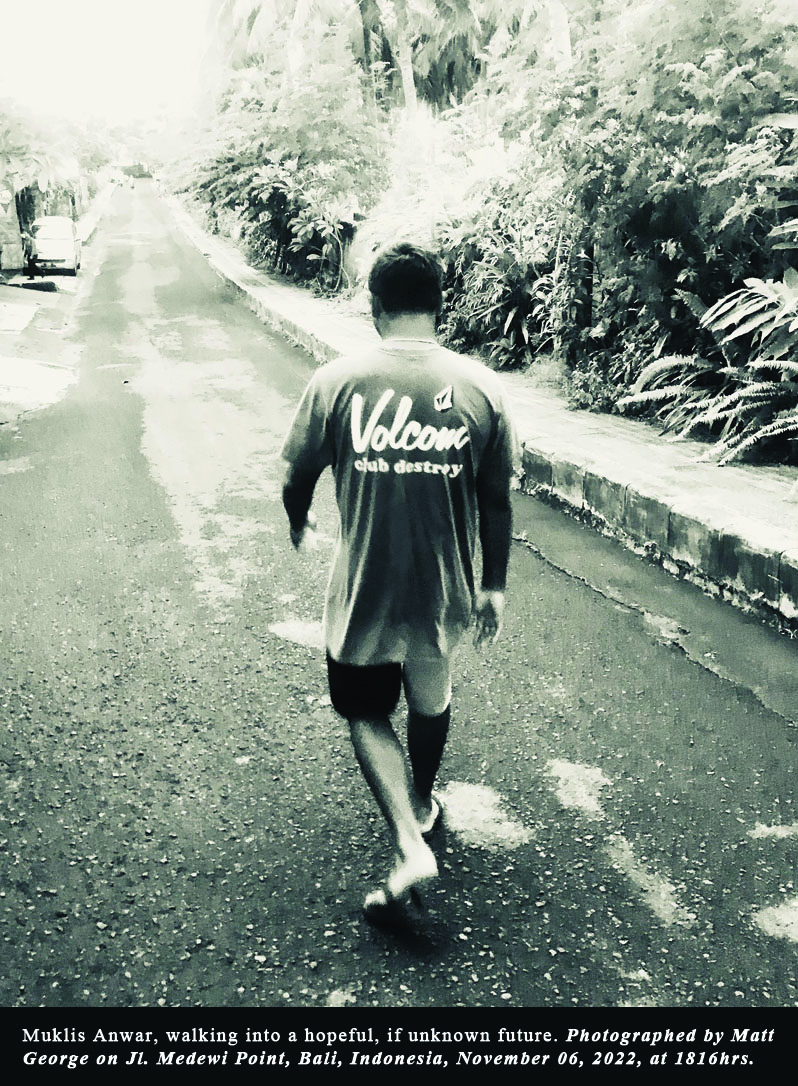CANGGU AND THE ART OF CRITICAL MASS

Once an outland of mud and back breaking toil in the rice paddies, today Canggu is the new motherlode of rave tourism and development for the dreamseeker. Swerving this place of ancient agriculture into the hands of European interlopers and rapacious developers. Canggu now rivals the reputation of Ibiza as one of the grooviest places on earth to see and be seen. The thing is, just how much can it take? Because Canggu is all on its own. Once a surfing outpost, now an overpopulated colony, it’s been cut off from the rest of the Island of Bali. The natural disaster known as tourism, combined with an absolute lack of civil infrastructure to handle it, has resulted in a geographical isolation due to snarled traffic. From Kuta Beach to Canggu, once mere minutes of driving, is now a bad two hours of breathing near pure carbon monoxide. And the once promised green zone “shortcut”, is now a famed biblical traffic jam that becomes as full as an egg.

This traffic is a result of a massive exodus of adventurers, scoundrels, criminals, dreamers, investors, carpetbaggers, draft dodgers and vegans who have forged Canggu into the most outlandish surfing community in the world. Astonishingly, usurping the Holy Grail of Uluwatu as Bali’s prime surf destination. Canggu has morphed into a miasma of every surfing creed, color, and philosophy drawn to its perceived promised land of cool for any surfer on earth who wants to reinvent themselves. Once an influencer’s paradise, now a paradigm. And all of this phenomenon happens minus the picture-perfect, clear blue, airbrushed dream tunnels that have made Indonesia every surfer’s fantasy. Canggu’s best waves break within a steaming hot beach break zone with silty, rice-paddy-run-off seas up against a dark, volcanic sand beach that at noon, can burn the soles off the hooves of water buffalo. A surf zone that is a bouncy castle for aerialists and a renaissance fair for retro riders.

Canggu, is the petri dish of restored western grooviness, art, fashion, food, multi-national sexual opportunity, and unchecked development, complete with the subsequent environmental and cultural disaster that such prosperity exacts. But despite its long being ground zero for the surfing hipster movement, the prime destination of a diaspora that longs for the way we were in the ’70s, Canggu is now reaching critical mass. Like a run-over Ibiza with rice, a place like this can only maintain its cool for so long. Today, the business of Canggu is business. And a swollen cumulonimbus of human over-saturation is fast approaching from the horizon. Tai Graham has managed to carve out a realm like no other in Canggu. A part owner of some of the hottest clubs on the island, he maintains his credibility by being the real deal when he hits the water. “It’s easy to sit there and complain about all that is going on here,” Says Graham, “but it’s just an evolution. And in many ways the best kind. Local kids are going to better schools, better hospitals, healthier, stronger, wealthier. A better future than back-breaking work under the sun, up to your knees in the mud for pennies? You wouldn’t want a better world for your kids? And their kids? C,mon man, we all live a great lifestyle here. The one we want. And all the issues will be dealt with. Just like anywhere worth dealing with.”
Sunsets do take all priority in Canggu, and none more than the one that sizzles into the horizon out beyond the “Old Man’s” surf spot. Once a refuge from the high-pressure lineups of neighboring Echo Beach, now Old Man’s features a parking lot the size of a football field. And at thirty cents a spot, it’s jammed without fail every evening. But still, this is one of the last local strongholds.

The Balinese people of Canggu still hold sway in their creaky bamboo warungs bursting with beer. Perched on the small limestone beach berm is a plywood promenade where one can get everything from a gin and tonic to a fresh coconut to a ten-times repaired rental surfboard. A local reggae band on a leaning wooden stage can be found on the beach blasting out hit after hit. All the songs you want to hear as the sun goes down in Bali. You know, “Hotel California,” “Knockin’ on Heaven’s Door” and the like. There is often up to eighty people in the surf. When the waves steamroll in, it’s carnage.
Nose-riding girl longboarders and outback-bearded guys on retro boards clunking rails all the way to their disasters in the sandy shore break. There is often five hundred people on the beach and sundry dogs. Like the people, most of the dogs are imports too. Siberian huskies seem to be a favorite. Ask the old Balinese woman who was sells you three-dollar beers where you should pee and she will indicate the Ocean with a vague wave of her hand. Which was absolutely correct. Because vile, shattered, public toilets or no, in Canggu, it all goes there anyway. And you might think about the local surfers, with their club contests and their daily battles in the lineup with the hordes of famous guitar plunking freesurfers that come to visit. Which seems a perfect fit for Canggu. Most visitors in Canggu don’t want to listen to a band; they want to be in one. And yet, by the time the sun sets and you walk back to your rental scooter here, behind you, out there beneath a purple sky, are the waves. As they always will be. Hissing and crashing and pumping money into this place with the power of solar flares. And that’s a story this island knows only too well.



Comments
Post a Comment